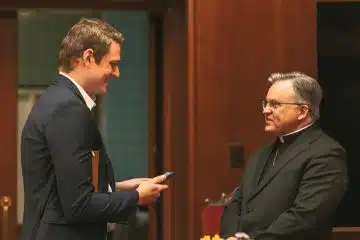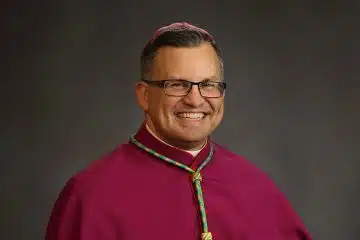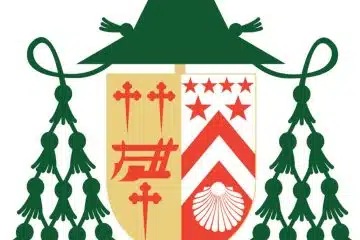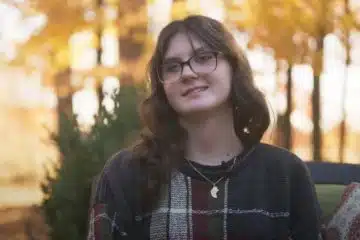Catholic priest shares inside look of accompanying a man on death row
Denver, Colo., Jul 4, 2023 / 07:00 am
Darryl Barwick was 19 years old when he killed 24-year-old Rebecca Wendt on March 31, 1986, at her Panama City, Florida, apartment. After watching her sunbathe by the pool, he followed her back to her room where he stabbed her 37 times. He was convicted of first-degree murder, armed burglary, and attempted sexual battery in November 1986. A jury unanimously recommended death in a 1992 retrial.
Thirty-seven years later, on May 3, 2023, Barwick was killed by lethal injection at the Florida State Prison at the age of 57.
Father Dustin Feddon, a priest from the Diocese of Pensacola-Tallahassee and the founder of Joseph House, a nonprofit ministry designed to support the reintegration of formerly incarcerated individuals into the community, accompanied Barwick on death row.
Feddon has worked in prison ministry since 2013 and has accompanied roughly 20 to 25 men on death row; however, Barwick was the first person Feddon accompanied up until the moment of execution. He spoke with CNA about his experience accompanying Barwick and the person he came to know during that time.
Feddon shared that Barwick grew up in “an extremely abusive home.” Reports showed that his mother tried to abort him by throwing herself down the stairs repeatedly and his father physically abused him, causing cognitive issues.
“It was a horrific childhood,” Feddon recalled. “And some of this, over the time that I got to know him, which was for about a period of time of about four to six weeks that I accompanied Darryl, so over those six weeks, I met with him multiple times and some of these memories, remembrances, stories would come up in our conversations.”
As Barwick reached his execution date, he was given the opportunity to have a spiritual adviser to accompany him during those last weeks. Separated by a plexiglass window, Feddon met with Barwick twice a week for one hour to offer him spiritual counsel. Once the date of the execution arrived, he gave Barwick his last rites and took his place among reporters and others in the viewing room where he watched Barwick be put to death.
“This was the first time that I accompanied someone to the point of their execution,” Feddon explained. “And so, this was my first viewing. I was not prepared for how macabre and how sinister it is in terms of… I was not prepared for the kind of theatrics of the execution itself.”
Feddon described the execution as resembling a theatrical play, where the curtain rises and the actors hold a pose for a brief moment before the action begins.
Roughly 20 people filled the viewing room to watch Barwick’s execution. As the curtain rose and the striking, white room was made visible to those in attendance, Barwick’s body lay flat on the gurney with only his head and right arm visible under the white sheets placed over him. A man dressed in a suit stood over Barwick, looking down at him with a “pensive look.” He then lifted his head, announced what the judgment was, and walked over to a phone on the wall where he received the final clearance to proceed with the execution.
Then Barwick was given the chance to say his last words.
“It’s time to apologize to the victim’s family, to my family,” Barwick said. “I can’t explain why I did what I did.”
He continued: “And another thing I would like to say, the State of Florida needs to show some kind of compassion and kindness for each other with so many kids in prison, there are 14- and 15-year-olds serving life sentences.”
Feddon added that Barwick also made it clear that he knew he wasn’t in the position to ask Wendt’s family for forgiveness. The priest says he felt “proud” of Barwick at that moment.
“Though he was already sedated, though he was in this space where he could feel, I would imagine, the hatred of so many around him, and what they saw in him as somehow not a human person, that he could still speak freely and speak his conscience, and that those were his last words.”
Barwick did not have any family members present at his execution. (Nor were any members of his victim’s family present.) However, Feddon had told him that he would be there for him in case “he needed someone to look at that he knew saw him as a child of God and as someone beloved and cared for.”
“We had conversations about how I would be there for him to be able to see me and know that I am praying for him, that I’m loving him in that moment,” Feddon said.
The injection process began at 6:02 p.m. and Barwick was pronounced dead at 6:14 p.m.
“It’s like watching a horror film, you want to look away, you don’t want to see and I’m already thinking, ‘What I’m seeing, I will never unsee again,’” he recalled. “And yet, I’m wanting to make sure that I’m able to make eye contact with him if he happens to look my way.”
Over the weeks Feddon spent with Barwick, he got to know him not as a murderer but as a “child of God.”
Feddon emphasized the word “child” when describing Barwick because “there was a felt sense of innocence in this man on death row.”
“And by innocence, an openness, a generosity, a capacity to wonder,” he continued. “He would ask me questions, the eye contact, he would look at me and have this kind of childlike smile and a sense of like, ‘Wow, that’s so fascinating, that’s interesting, ‘I love how you said that.’”
“So I say a child of God because of the simplicity of Darryl,” he said.
Feddon called Barwick a “faithful Catholic.” He prayed the rosary and read Scripture every morning. Each day at 3 p.m. he prayed the Divine Mercy Chaplet.
He was also a “man of community,” as he loved his brothers on death row. The facility even made Barwick the caretaker of another prisoner who was blind. He dedicated much of his time to writing letters to several pen pals, one of whom was a nun in Philadelphia who formed a friendship with Barwick.
“I told him, I said, ‘Darryl, there’s going to be a legacy of Darryl Barwick. There’s going to be a legacy of these letters you’ve written,’” Feddon recalled. “‘These people of the lives you’ve touched, they’re going to have your letters and I have no doubt they’re going to share some of your stories and some of your insights with their friends, and that’s going to build up the world.’”
Feddon continued: “He told me that it meant a lot to know that there is something that he’s given to the world, even though he’s been thrown away and, kind of, passed, so to speak, outside of the world, or kept apart from the world.”
“So, Darryl, to me, was a devout, faithful, Catholic man who had a sense of innocence and simplicity, and no doubt, also most importantly to me, was a man of community.”
Feddon explained that he has personally always been against the death penalty. However, accompanying Barwick only amplified that.
“I was already opposed to the death penalty prior to Darryl’s execution,” he said. “However, being present with him in those last moments only deepened my conviction that the death penalty is a grave moral evil and an affront to the reality of redemption God offers everyone in this life.”
“The work of accompaniment with the incarcerated, and especially those on death row, has taught me the incredible truth that each person, no matter what we have done, carries an indelible mark of the divine within,” Feddon shared. “It has taught me that if I step back and behold the person, inevitably God’s loving presence will be revealed in some tangible way. Prison ministry has increased my sense of reverence for the mystery of human life, for all of God’s children.”
In February 2018, a revision was made to the Catechism of the Catholic Church regarding the death penalty. No. 2267 now states that although the death penalty was long considered an appropriate response to grave crimes and a means of safeguarding the common good, an increased awareness of the dignity of the human person and effective systems of detention, among other factors, have led the Church to teach that “the death penalty is inadmissible because it is an attack on the inviolability and dignity of the person, and she works with determination for its abolition worldwide.”













